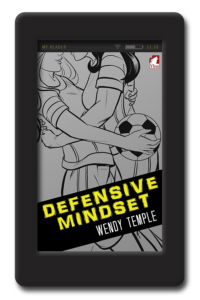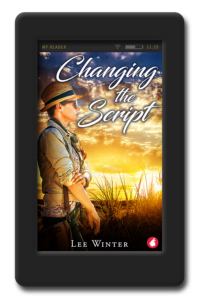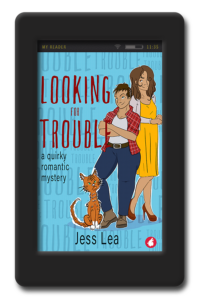Why do so many readers love enemies to lovers in lesbian romance?
Why does the idea of “enemies to lovers” capture our imaginations and our hearts? Let’s be honest: in real life, it’s not the most likely scenario. People might change their minds about each other, but it’s pretty rare to meet someone who’s happily married to her former arch-nemesis. (Although if you are, please do tell us about it!)
If “enemies to lovers” isn’t common in the real world, why does the trope work so well in fiction?
We like conflict…in lesbian romance, at least
So first, let’s talk about the enemies part in the “enemies to lovers” equation. For a story to hold our attention, things have to go wrong. And when two opponents are battling each other ferociously, while fighting just as hard against their own feelings, there’s a lot that can go wrong. And many reasons to pay attention.
Sometimes the rivals’ showdowns are physical and epic. Think of the gorgeous, extravagant shockfest of Killing Eve. In this TV show, the future of the world and lives of all the characters hang in the balance, as the unstable anti-heroines refuse to admit that they like each other.
Other battles are intellectual, as in Alison Bechdel’s Dykes to Watch Out For. Mo, the earnest, socially aware, vegan underachiever, loathes the ambitious, pretentious, cheerfully selfish Sydney. And she definitely doesn’t fancy her. Right?
In other stories, the characters are combative because they are fighting their own demons. In Defensive Mindset by Wendy Temple, Jessie is a star footballer. She clashes with the team’s new recruit, Fran. Surly, moody, pierced and tattooed, Fran plays dirty. She breaks team rules and riles Jessie.
But the real struggle is internal: Fran is fighting an addiction that destroyed her career and her past relationships. She might learn to love Jessie, but can she calm the conflict within? The “enemies to lovers” pay-off here is hard fought and well earned.
We like high stakes and strange alliances in lesbian romances
And then there’s the lovers part. In any “enemies to lovers” tale, there comes a moment when our hostile heroines have to set aside their differences and work together, knowing that if they fail, they’ll both pay a heavy price. In Changing the Script by Lee Winter, Alex, a globe-trotting indie filmmaker, is struggling to shoot her first big-budget movie in the face of opposition and sabotage. If she fails, her career will be toast. Filming in a beautiful country town in New Zealand, she has to negotiate with Sam, the local cop, who’s fighting to protect her community from drug-dealing bikie gangs. Alex and Sam are at loggerheads, but they both need all the help they can get. Will desperate necessity bring them together? It’s only a matter of time before they see eye-to-eye and their hostility evolves into the passion readers have been waiting for.
We like feeling wise…and smug
There’s a strange pleasure in watching two characters squabbling like fools, blind to what we readers can see clearly: that they are meant to be together. It might frustrate us, but it also makes us feel smart. Well, smarter than them.
Of course, sometimes the wisest characters aren’t intellectuals, but four-legged friends. In Lola Keeley’s A Roll in the Hay, Tess is the new vet in a rural town. Outspoken and scrappy, she doesn’t impress Susannah, the impatient, haughty lady of the manor.
But they are thrown together by a goofy golden Labrador and an elegant, retired racehorse. The trust and affection of the animals for their humans forces the two leads to rethink their view of each other. The animals, like the readers, can see both women’s softer sides and their ability to love.
We like happy endings for all in our lesbian romances
Most fictional showdowns end with one character being defeated. But “enemies to lovers” offers a rare alternative: a win-win, where both leads end up stronger and happier together. Who doesn’t love that?
When I started my second novel, Looking for Trouble, which is more a lesbian romantic mystery than a lesbian romance, I wasn’t planning an “enemies to lovers” story. The idea was that Nancy, an aspiring political reporter, and George, a party volunteer, would meet, like each other, and work together to defeat their opponent, the maverick, charming politician Clara West.
But something wasn’t working. The characters were unclear and the story wasn’t moving. Then I thought: “What if George and Nancy can’t stand each other?”
That changed everything. George emerged as a cranky, bullish loner, who feels left behind by a world that has no use for truck-driving, middle-aged lesbians who don’t play nice.
She is drawn to the intellectual Nancy, while also dismissing her as an over-educated snob.
Meanwhile, Nancy, through scrapping with George, emerged as a stronger, more passionate character, determined to go after what she wants, despite the risk to her academic career and, eventually, her life.
Sometimes it’s through conflict and suppressed desires that characters take shape. And sometimes “enemies to lovers” delivers a happy ending for writers, too.
Jess Lea lives in Melbourne, Australia, where she started out as an academic before working in the community sector. She loves vintage crime fiction, the writings of funny women, and lesbian books of all sorts. Jess can be found writing in cafes, in parks, and in her pyjamas at home when she should be at work. Her quirky lesbian romantic mystery Looking for Trouble, which is also an enemies to lovers romance, is now available everywhere.






0 Comment